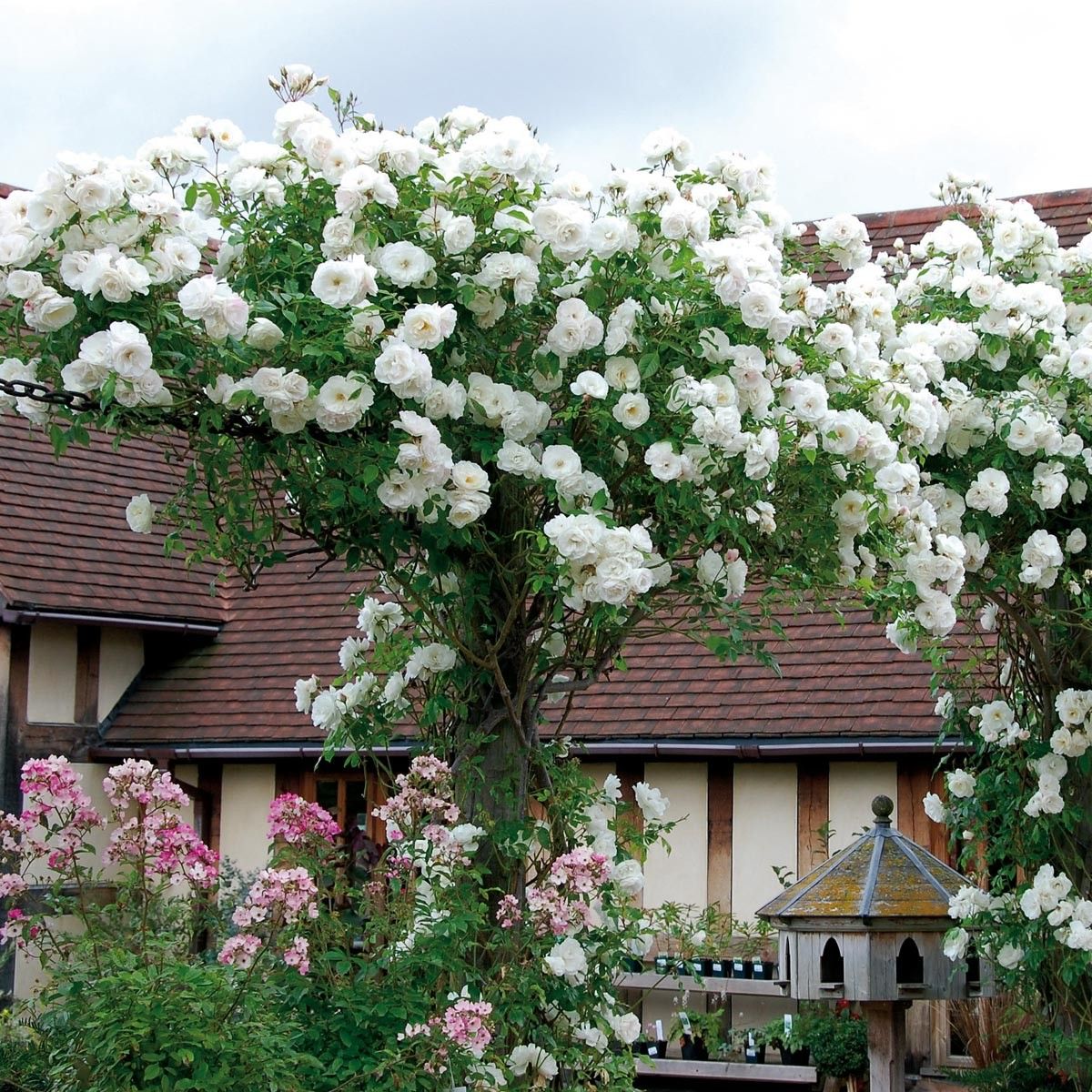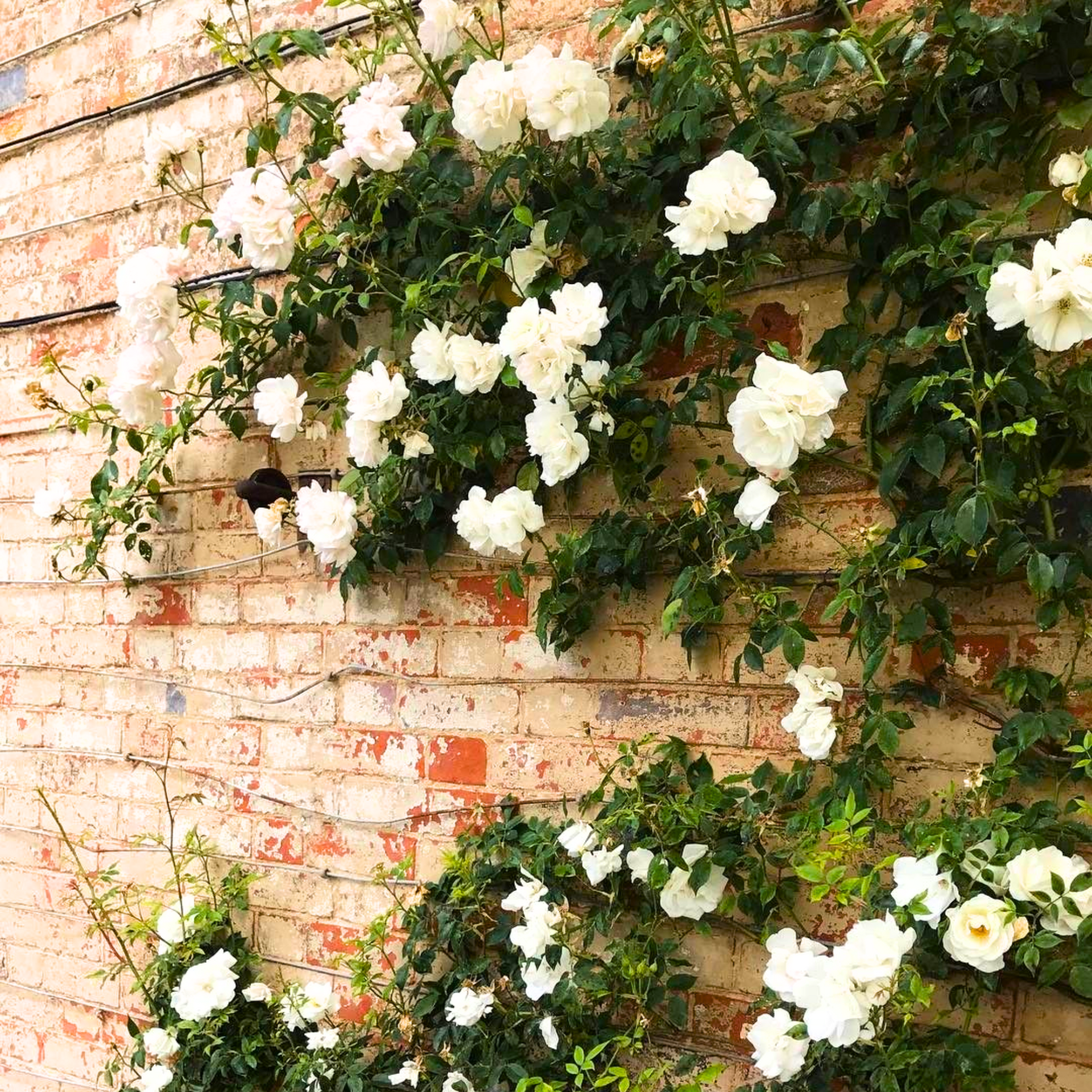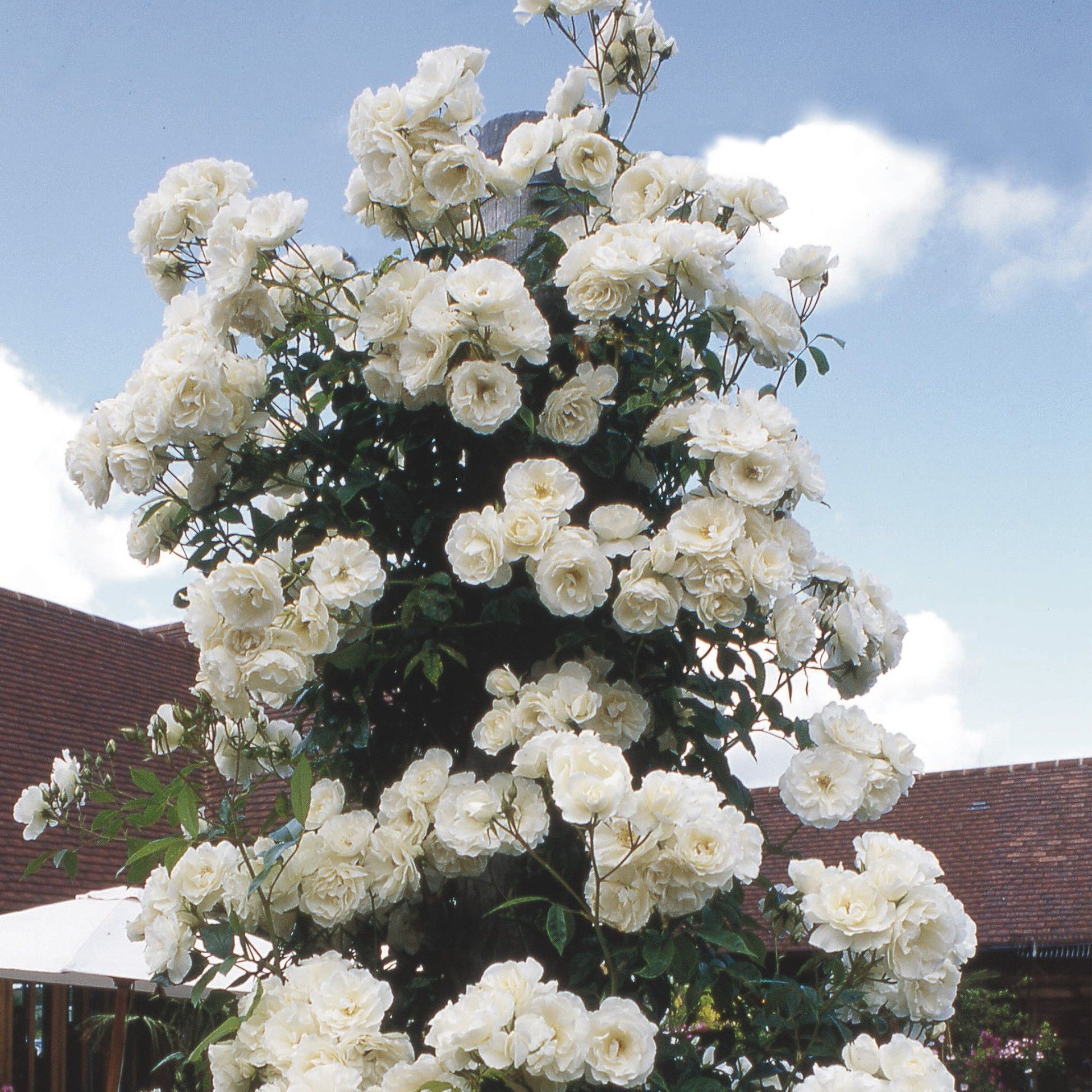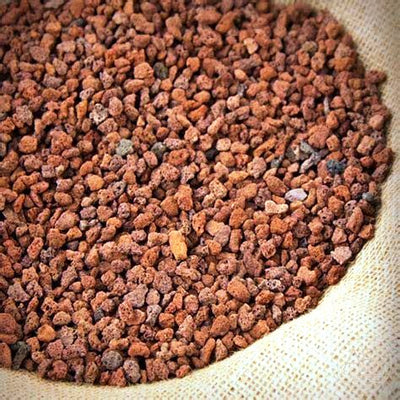




Green Paradise White Scented Climbing Rose Live Plant
2 reviews
Rs. 499.00
Guaranteed Safe Checkout
Green Paradise Offers White Scented Amazing Rose Plant
About White Scented Rose Plant
The White-Scented Climbing Rose is a beautiful and fragrant plant that belongs to the Rosa genus of the Rosaceae family. It is known for its vigorous growth and ability to climb and cover structures like walls, trellises, and fences. As the name suggests, this rose variety produces stunning white blooms that exude a delightful fragrance, making it a popular choice among gardeners and rose enthusiasts.
Here are some key features and characteristics of the White Scented Climbing Rose plant:
Appearance:
The White-Scented Climbing Rose typically grows long, flexible canes that can reach heights of 8 to 12 feet (2.4 to 3.7 meters) or more. The plant develops deep green, glossy foliage that provides an excellent backdrop for the white flowers. The flowers themselves are typically large, with numerous petals and a classic rose shape.
Fragrance:
One of the standout features of this rose variety is its fragrance. The White Scented Climbing Rose emits a powerful and intoxicating scent that is often described as a combination of sweet, floral, and musky notes. The fragrance can fill the surrounding area, making it a delight for the senses.
Blooming period:
This rose variety tends to bloom in cycles throughout the growing season. The first flush of blooms usually occurs in late spring or early summer, with subsequent flushes occurring periodically until the first frost. The exact blooming period can vary depending on the specific climate and growing conditions.
Growing requirements:
The White-Scented Climbing Rose thrives in well-drained soil that is rich in organic matter. It prefers a location with full sun exposure, although it can tolerate partial shade. Regular watering is necessary, especially during dry spells, to keep the soil consistently moist. Pruning should be done in early spring to remove dead or damaged wood and promote new growth.
Uses:
This climbing rose variety is commonly used for decorative purposes in gardens, parks, and landscapes. Its ability to climb and cover structures make it an excellent choice for creating vertical interest and adding beauty to walls, fences, and pergolas. The fragrant blooms also make it a popular choice for cutting and using in floral arrangements.
It's important to note that while the information provided here represents general characteristics of the White Scented Climbing Rose, specific care and growing requirements can vary depending on factors such as climate, soil conditions, and local gardening practices. Consulting local gardening resources or experts can provide more tailored advice for successfully cultivating this beautiful rose variety in your specific location.
How To Grow White-Scented Climbing Rose
Growing a white-scented climbing rose plant can add beauty and fragrance to your garden or outdoor space.
Here's a step-by-step guide to help you grow and care for your white-scented climbing rose:
Select the right variety:
Choose a white-scented climbing rose variety that suits your climate and growing conditions. Some popular white-scented climbing rose varieties include 'Iceberg,' 'Madame Alfred Carrière,' and 'New Dawn.' Visit your local nursery or consult with a gardening expert to find the best variety for your area.
Choose the planting location:
Climbing roses require a sunny spot with at least six hours of direct sunlight per day. Ensure the soil is well- draining and rich in organic matter. Also, consider the climbing support structure, such as a trellis, arch, or wall, where your rose can grow and climb.
Prepare the soil:
Before planting, Prepare the soil Before planting, prepare the soil by removing any weeds, jewels, or debris. Dig a hole that's wide and deep enough to accommodate the rose's root ball. Incorporate organic matter, such as compost or well-rotted manure, into the soil to improve drainage and provide nutrients.
Planting the rose:
Gently remove the rose plant from its container, being careful not to damage the roots. Place the plant in the prepared hole, making sure the bud union (the swollen area where the rose is grafted onto the rootstock) is level with or slightly above the soil surface. Backfill the hole with soil, and indurate it gently around the roots.
Watering:
After planting, give the rose a thorough watering to settle the soil around the roots. Water regularly, especially during dry spells, but avoid overwatering, as excessive moisture can lead to root rot. Aim to keep the soil unevenly wettish, but not doused .
Pruning and training:
Climbing roses benefit from regular pruning and training to encourage healthy growth and abundant blooms. Prune your rose plant in late winter or early spring when it is dormant. Remove dead, damaged, or crossing branches, and shape the plant to maintain an open and airy structure. Train the canes to grow along the support structure, tying them loosely with twine or soft plant ties.
Fertilizing:
Feed your climbing rose plant with a balanced rose fertilizer in early spring, following the manufacturer's instructions. Repeat the application every four to six weeks during the growing season. Organic alternatives like compost or well-rotted manure can also be applied as a slow-release fertilizer.
Pest and disease control:
Monitor your rose plant regularly for signs of pests like aphids, spider mites, or rose beetles. Treat infestations promptly using appropriate insecticides or organic pest control methods. Also, keep an eye out for common rose diseases such as blackspot or powdery mildew. Prune off and destroy infected plant material and use fungicides if necessary.
Mulching:
Apply a layer of organic mulch, such as wood chips or compost, around the base of the rose plant. Mulching helps retain humidity, suppress weeds, and regulate soil temperature. Maintain a gap between the mulch and the stem to prevent rotting.
Winter protection:
In colder climates, provide winter protection for your climbing rose plant. Before the first frost, gently tie the canes together and secure them to the support structure. Surround the base of the plant with a layer of mulch to insulate the roots. You can also cover the plant with burlap or a protective cloth if the temperatures drop significantly.
With proper care and attention, your white-scented climbing rose plant should thrive and reward you with beautiful fragrant blooms. Remember to enjoy the process and take pleasure in the beauty and fragrance
v
veena nice service
p
piyush desai nice plants
𝗥𝗲𝗹𝗮𝘁𝗲𝗱 𝗽𝗿𝗼𝗱𝘂𝗰𝘁𝘀
Flowering Plants
Green Paradise Tabebuia rosea Pink Trumpet Tree
Green Paradise Offers Beautiful Tabebuia Rosea Pink Trumpet Tree About Tabebuia Rosea Pink Trumpet Tree Green Paradise Presents Beautiful Pink Flowered Tree Tabebuia Rosea. Easy Growing And Can be Grown...
Rs. 699.00
Rs. 449.00
Outdoor Plant
Green Paradise Dwarf Variety Green Coconut Plant
Green Paradise Offers Dwarf Variety Green Coconut Plant About Green Coconut Plant The dwarf variety of green coconut plants, also known as the dwarf coconut palm or Cocos nucifera...
Rs. 699.00
Rs. 499.00
Fruit Plants
Green Paradise Italian Lemon Fruit Live Plant
Green Paradise Offers Amazing And Most Easy To Grow Italian Lemon Plant About The Italian Lemon Plant Light The Lemon Tree thrives in full sun in a place that...
Rs. 399.00
Flowering Plants
Madhumalati Rangoon Creeper Double Petal Plant
Green Paradise Offers Beautiful Madhumalti Double Petal Rangoon Creeper Plant About Madhumalti Creeper The Madhumalti Creeper with Double Petals, also known as Rangoon Creeper (Scientific name: Quisqualis indica), is a...
Rs. 539.00
Rs. 399.00
Fruit Plants
Green Paradise Original Desi Lemon (Kagzi Lemon)Plant
Green Paradise Offers Original & Healthy Desi Lemon Plant About Desi Lemon Plant The Desi Lemon plant, scientifically known as Citrus limon, is a small to medium-sized tree...
Rs. 349.00
Flowering Plants
New rare Blue Hibiscuss Alyogyne huegelii live and healthy plant
Enchanting Elegance: Unveiling the Allure of the Green Paradise Blue Hibiscus Plant About Blue Hibiscus Plant Nature never ceases to amaze us with its boundless creativity, and the blue hibiscus...
Rs. 299.00
SOIL & FERTILIZERS
porous rocks for Soilmix In bonsai,succulents and adenium Plants 5kg pack
green Paradise porous rocks Provides High quality ingredients throughout, Good water-retention, Good drainage and Good aeration to the plants. porous rocks are Light Weight And used as a component of...
Rs. 649.00
Herbal And Medicinal Plants
Maghai Pan Nagarvel Betel Leaf Live Plant
Green Paradise Offers Maghai Pan (Betel Leaf) Plant About Maghai Pan Plant Maghai Paan (Betel leaf), also known as Piper beetle, is a perennial vine belonging to the Piperaceae family....
Rs. 349.00


















